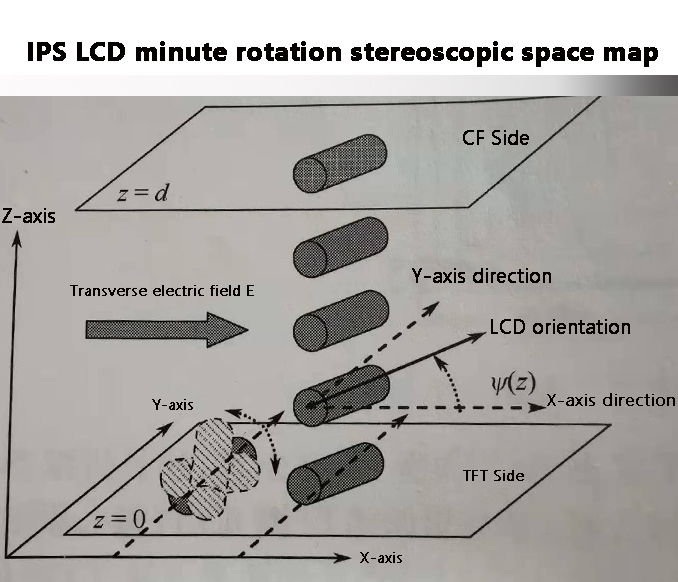Hangzhou Xuhong Technology Co.,Ltd
EN
中文
IPS display mode become the ideal display technology in TFT LCD display products due to its excellent full view characteristics, dynamic definition and color reproduction effect. In aerospace, medical, outdoor and other fields with high technology content, IPS display technology is an ideal choice. The display principle of IPS mode is that a liquid crystal molecule rotates in the plane to control the brightness change. With the continuous improvement of process, material and pixel structure, the performance of IPS display technology is becoming more and more perfect. Now we will explain the display principle of IPS TFT LCD screen, from 2 aspects of the optical principle and electrical principle.

一,The optical principle of IPS LCD screen.
The optical principle of IPS display technology mainly studies the relationship between the optical indexes of IPS and the design in order to obtain the best optical specifications. Brightness, contrast ratio, and viewing Angle are the main optical specifications of IPS mode. The basis of brightness design for IPS display mode is to obtain an ideal V-T curve.
Typically, the curve of the relationship between IPS transmittance and the driving voltage, which we refer to as IPS for short, shows the V T curve. First of all, we introduce a concept, what is the initial azimuth Angle of IPS liquid crystal molecules? It is that the IPS liquid crystal molecules rotate under the action of the transverse electric field E, deviate from the Y-axis of the plane, and form an azimuth Angle less than 90° with the X-axis, which we call the initial azimuth Angle. The design of the initial azimuth Angle directly affects the V-T curve of the IPS LCD display, and then affects the delicacy of the IPS display. When the initial azimuth Angle is 77°, the IPS liquid crystal molecular orientation is obvious, and it is easy to deflate under the touch of the applied voltage. Therefore, IPS display tends to select the V-T curve below the initial azimuth Angle of 77°, so as to obtain a more delicate display effect. Next, we introduce the viewing Angle and contrast ratio. The essence of the viewing Angle is the level of contrast ratio in the 360° space of the LCD screen. IPS mode is a display technology developed to solve the defects of narrow viewing Angle in TN display. IPS liquid crystal molecules are parallel to the surface of TFT LCD screen along the direction of the polarization-axis of the CF side polarization-plate, the corresponding transmittance change is very small and almost no gray scale inversion occurs. Therefore, the IPS LCD screen can obtain a viewing Angle range of more than 170° in the top, bottom, left and right directions, with good stability of contrast ratio.
TWO、The electrical principle of IPS LCD screen.
The electrical principle of IPS display technology is mainly to study the threshold voltage of IPS LCD screen. According to the knowledge of liquid crystal electricity, the torque generated by the applied voltage is the prime force to promote the rotation of liquid crystal molecules, and the elastic force is the resistance to inhibit the rotation of liquid crystal molecules. When the elastic force and torque are balanced the applied voltage is the threshold voltage of the IPS LCD screen. The threshold voltage of IPS LCD screen is much larger than that of TN LCD screen, and the threshold voltage of IPS LCD screen is related to the thickness of the box and the electrode spacing. Therefore, the threshold voltage of IPS LCD screen is generally adjusted by the design of the electrode spacing.